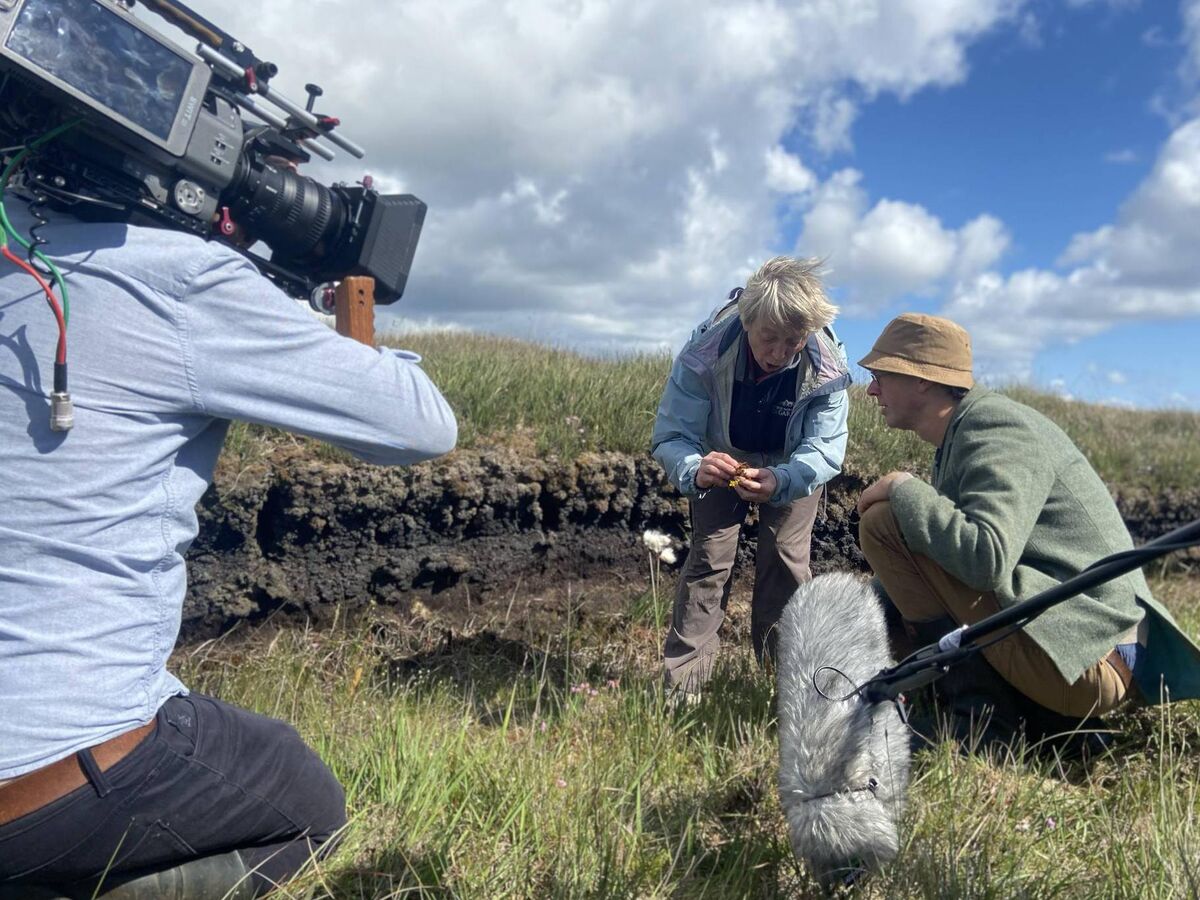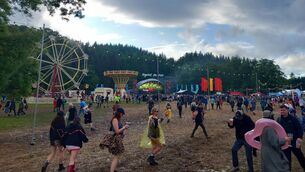Manchán Magan: 'Peat is worth more to us in the ground than in the fire'

Manchán Magan in An Fód Deireanach, which translates as 'the last sod'.
Like many Irish people, the bog is part of Manchán Magan. His father is from Co Longford so as a child Magan spent summers cutting turf on his grandfather’s land. Drinking flasks of tea and being eaten alive by midges. Neither lake, nor land, the bog, which takes up one sixth of the country’s landscape, has always fascinated him. He jumped at the opportunity to front An Fód Deireanach, a new four-part series on TG4 which explores Ireland’s relationship with its peatlands.
“When it comes to the bog, I had this idea that people in the west weren’t willing to modernise,” he says. “I didn’t realise the sovereignty and power that comes from being able to heat your own house for a man. Doing work in the summertime so he can provide heat and cooking fuel for the winter for his family. We’ve always been hunters and gatherers. There are seanfhocail about the reassurance of seeing a well-stocked barn with good, high ricks of turf ready.
“Also the pub is dying in the west of Ireland. Communities getting together for dances is long gone. There was this thing in summer – men and women working in the bog, getting to know the neighbours’ children. It was community time away from the farm.
"I hadn’t realised the social element is still relevant today. Yes, they don’t go in the horse and cart anymore, and the hopper, a machine cutter, might cut the turf, but it still involves turning sods, drying them. There’s a gamble: if it’s a dry year you get this bounty; if it’s not you come home with very little and might have to buy some coal. It creates excitement.”
Sadly, however, as one contributor in the documentary series remarks, the sod is worth more to us in the ground than in the fire. Even Bord na Mona, the semi-state body synonymous with turf-cutting, has changed its ways. The company has turned green, focusing its energies on wind farms and agritourism.

Ireland, which has the world’s third-largest surviving peatlands, has an important role to play in helping to preserve what remains. Bogs are a bulwark against flooding and destruction of wildlife and plants. Magan also mentions people shouldn’t use mosspeat in the garden any more; there are more sustainable alternatives.
“The Environmental Protection Agency have now realised that two-thirds of our national carbon stocks are in peatlands,” he says. “All this talk about trees. Tree huggers like me – trees are meaningless compared to peat. There’s more carbon in the world’s peatlands than there are in all its rainforests, but they get no attention because they’re not evocative or alluring – because they’re these flat, drab brown expanses.”
An Fód Deireanach isn’t a dull series of university lectures on climate change and biodiversity. There are wonderful contributions peppered throughout. Luke Ming Flanagan fights the corner for the traditional bog cutter; Magan argues that despite rising fuel prices, people – with government help – will have to find alternatives to heat their homes.
In the mountains around Muskerry, Co Cork, the musician and composer Peadar Ó Riada reflects on the bog’s place in Irish history and its future. In Co Donegal, herbalist Margaret Chití Ní Bhaoill – Magan’s favourite contributor – has some fascinating remedies to share.

Magan is juggling several projects at the moment, including a new podcast series on direct provision due out next week; the Imax cinema release of a Liam Neeson-narrated heritage movie about Ireland which he presents; and he’s in the middle of a theatre run of Arán agus Im in which he celebrates sourdough bread and the Irish language. As to the outlook for our dwindling bogs, he’s optimistic.
“Ireland has no wilderness at the moment. Britain does – areas of Scotland are wilderness. America has vast tracts of wilderness. Everything in Ireland is farmed or everything was exploited. We didn’t leave anything wild. Before the 17th century, bogs were the areas where wild spirits like Liam-na-Go lived. That’s what it needs to go back to. There will be walkways through wild bogs for people who want to escape from the chaos.
“We need to educate people to appreciate the wilderness of bogs: the infinite insect species, the bog rosemary and bogbean, plants that are unique to the bog, and the great partridge and red grouse who live there. Once we begin to see this wilderness is unique on a global level, provided they become pristine and swampy again, we’ll use them as places to relax and walk in.”
- The first episode of An Fód Deireanach broadcasts on TG4, Thursday, April 7, at 8pm



